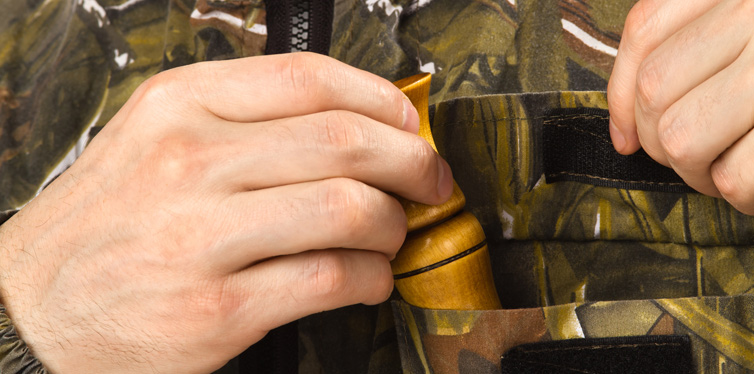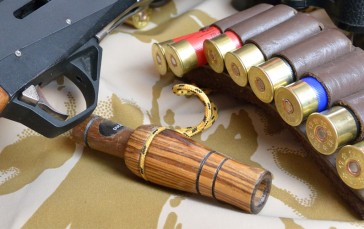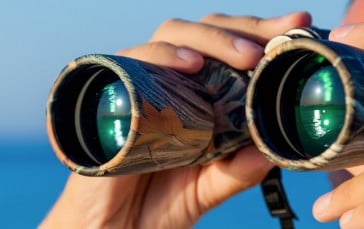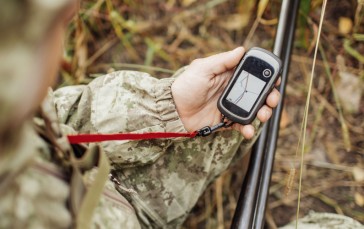Best Results With A Duck Call
So you’ve just treated yourself to the best duck call for you and you’re eager to get out into the wilderness, whether that be a family safari in Africa or just at the local lake, whichever works for you. However, upon getting there, you put the call to your lips, you inhale, and you triumphantly blow like you’ve never blown before, and the result? Zero ducks.
Not knowing how to use your duck call correctly means it’s effectively useless, and we don’t want you to make a fool of yourself on your next expedition. So to give novices some help and to refresh the memories of those who are a little out of practice, we’ve put together a handy guide to how to achieve the best results using a duck call.

Why Would You Need A Duck Call?
A duck call is an essential hunting gear if you want to be successful in your duck hunting exploits. Instead of mimicking a duck call with your hands as they did way-back-when, a fully purposed duck call allows you to recreate the sounds of many duck species with ease to attract them close.
Know The Type
You’ll find 2 types of common duck calls, the Single Reed, and the Double Reed, and while you can use either effectively, they have their stark differences.
Single Reed – These duck calls boast a wider range of sounds and are often more difficult to use. Experienced hunters prefer them, whereas novice hunters will struggle.
Double Reed – Ideal for beginners, Double Reed duck calls are easier to use, but they won’t offer the noise range of their Single counterparts.
There are also Triple Reed calls available, but they are not as plentiful as Single or Double options.
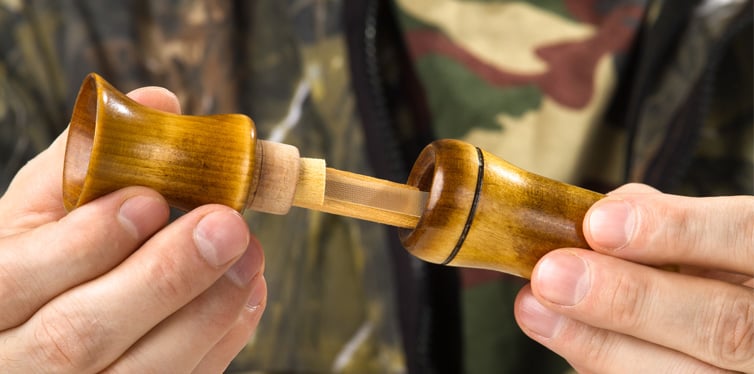
Get The Material Right
Another shock for beginners is discovering that duck calls are not always made from the same material. Instead, there are 3 to choose from.
Acrylic – This is loud, and it is sharp, which is perfect for areas with a lot of noise pollution or if you are far away from the ducks.
Wooden – This softer sound is ideal for matching the sound of a duck as close as possible. They also look classier and therefore are often preferred by hunters.
Polyurethane – This duck call provides the perfect balance between acrylic and wooden and offers volume without being too loud and manages the right amount of softness in each call.
Hold It Properly
It’s not enough to just put the duck call to your lips and blow. Like most great romances, it all starts in the hands. It isn’t the most difficult thing in the world, but learning how to do it properly will save your blushes next time you are out.
There are 2 ways to hold a duck call depending on how free your hands are.
For one-hand use:
- Hold the call by the chamber
- Wrap your ring finger around the call
- Hold your little (pinky) finger at the hole
If you’re able to go two-handed, then try this method:
- Hold it like you would a cigar (not that we condone smoking or whatever)
- Use the palm of your free hand to control the sound
Learn To Blow
Now you’re ready to attract all the ducks you can, just remember to never, ever whistle. Instead, use your diaphragm, and if you’re not sure what that’s like, try coughing and copy that. Doing this will produce the ideal sound required for an accurate duck call and not a whistle.
K.I.S.S
Or, keep it short and simple, as well as gentle, because how many ducks have you heard making long, creepy calls like we’re quickly heading towards some terrifying duckpocalypse. This works better for attracting the ducks instead of scaring them off.
Repetition In The Reeds
It’s not enough to merely try one duck call and then call it a day. Correct and effective duck calling requires repetition. After doing this a few times (that is: more than 2, less than 7), listen for the duck’s response. If you don’t hear a response, you may need to wade further in or improve your blowing technique.

Speak The Language Of The Ducks
While making the duck call is simple (or as simple as you will get) successful duck hunters go a step (or a waddle) forward and learn the language of ducks. You can master everything from pouring your heart out; a longer call, or mimicking the ‘quainck’ noise of longing lady ducks.
Other noises can welcome ducks at a distance to gain their trust (kank kank kank), whilst tikki tukka lets ducks around you know there is food nearby, although they might be disappointed to learn you bamboozled them.
We’re sure you can get by relatively fine without mastering all duck languages, but short of dressing yourself up in a duck costume, taking the effort to get comfortable with them will give you an edge over other hunters and the ducks themselves.
Further Thoughts
Don’t Get Attached to Just One Call – There are many ducks and therefore many types of duck calls. If you want to get the most from your duck calling adventures, it’s important to explore different ducks calls and different sounds to attract as wide a variety as possible. Some duck calls appeal to just 1 or 2 duck species, whereas others can mimic the sounds of as many as 6 or 7.
Keep It Clean – A clean duck call is the best way to achieve consistent and satisfying results. You can do this by swilling it around in warm water every time you get back home. When out on your adventures, also try to keep the mouthpiece as moisture-free as you can, otherwise it will stick and produce the wrong sounds.
Practice Makes Perfect – If you’re struggling to get it right but really want to be the best you can, then practicing as often as possible is the only way to improve. Often, it’s just about getting the technique down, and from there you will have no issues.

Quack Quack
Learning the ins and outs of the perfect duck call may feel like more of a science than you first expected, but without these skills, you’ll never achieve your or your duck call’s true potential.
Sources:
- How to Use A Duck Call Properly – Hunting Mark
- 8 Duck Calls Every Duck Hunter Must Master – Ducks
- How to Clean a Duck Call – Duck Commander


